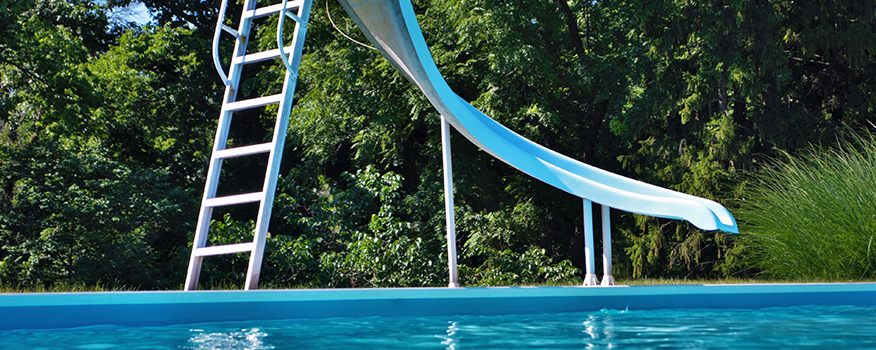Safety should be the top concern for anyone installing a swimming pool and it is important to consider from many angles. When it comes to pool safety, people tend to think of common dangers like slip and fall injuries on a wet deck or drowning. However, there is also another risk to consider: bonding and grounding of the swimming pool.
Proper electrical bonding and grounding are not what most pool owners think about, but they are probably the most important safety features involved in pool installation. Swimming pools rely on electricity to power certain features.
 Essential pool amenities such as pumps, underwater lights and pool heaters rely on a properly installed electrical system. If some of this equipment is not installed to code, small amounts of electricity can shock swimmers and even be fatal.
Essential pool amenities such as pumps, underwater lights and pool heaters rely on a properly installed electrical system. If some of this equipment is not installed to code, small amounts of electricity can shock swimmers and even be fatal.
The best way to ensure that electricity is flowing safely through pool equipment is with proper bonding and grounding.
What is grounding?
Grounding is the process of ensuring that interconnected pool components are connected to the earth. It is used to provide a low-resistance path from direct electrical currents to the ground and away from the pool and its equipment.
Grounding connects the pool’s electrical network to the electrical panel and discharges any stray voltage to the earth via a grounding rod or similar method. Without a proper grounding system, individuals in the pool or pool equipment can become the conductor of electricity.
What is bonding?
Bonding is the process by which electrical and metallic components of a pool are joined with a wire pathway. Bonding connects and contains the transmission of any electrical voltage that could damage pool equipment or hurt pool occupants. Without a proper bonding system in place, stray electrical current can conduct when touching the water or any metal equipment.
According to the National Electric Code (NEC), all the following metal components should be connected to a bonding grid:
- Pool lights
- Handrails, ladders and drains
- Pool decks
- Pool pump
- Any metal structures within 5 feet of the pool wall
It is also important to make sure hand rails, water volleyball poles and deck umbrellas are anchored to the ground.
Mitigating stray voltage
Because installing pools and their equipment involves a lot of electrical components, stray voltage is always a possibility. This occurs when voltage exists in the ground and electricity has “leaked” through a power source. This stray electrical current searches for an easy target. Since water – especially chemically treated pool water – is a high conductor of electricity, a stray voltage can cause a shock when a swimmer exits the pool.
The safest way to mitigate stray voltage is by installing equipotential bonding grids below the pool deck. These grids act as an outlet for any stray voltage.
Electricity and water can be a deadly combination. Bonding and grounding in a pool work together to provide an important safety feature that ensure safe swimming. Swimming pool bonding and grounding protects the pool owner’s investment and a pool builder’s liability.



